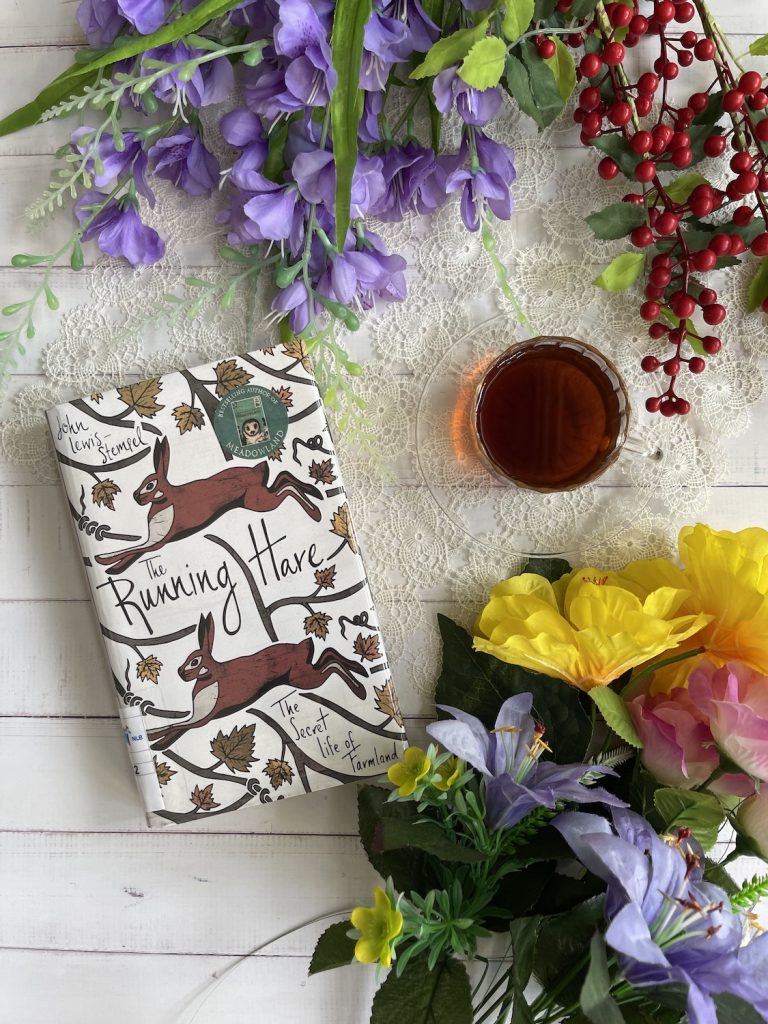It brought a smile to my face to see that the blurb of the book ended with “this is a rare and joyful book” while the first line of the preface was “Now that I look back, I see that I have written with some anger.” Those are such different emotions that I wonder how the blurb writer missed the preface! But small contradictions aside, The Running Hare is a beautiful book about cultivating corn the traditional way in Britain.
Frustrated with the lack of life in the modern British field, Stempel starts the book with a dream: to plough and harvest a field the traditional way. He managed to rent a field for a year and this book is the chronicle of that year, from his efforts to plant and harvest, his memories of the past, and of course, the descriptions of the animals that live with the field (including a few hares).
Surprisingly enough, the style of the book reminds me of Cream Teas, Traffic Jams and Sunburns. Though the subject matter is very different, both authors dip in and out of the past and reference various books liberally. In both cases, you can tell that the authors are very widely read in the subject and they both write with a passion for bringing you all the facts, no matter how old they are. In The Running Hare’s case, I finished the book with a new author to read – Richard Jefferies, a Victorian nature writer who’s liberally quoted in the book.
Now, what of the contradiction between the blurb and the preface? Actually, I think both emotions are in the book. I do see anger in the book, especially when Stempel talks about the effects of modern farming on the biodiversity in the farm. But I also see joy when he sees the animals coming back to the field and wonder as he observes his little friends. There’s a broad range of emotions in this book and it’s wonderful.
As I was reading this book, I was also thinking of the book Wilding by Isabella Tree. Tree also tried to improve the biodiversity of her farm, but in her case she gave up farming entirely and gave the land back to nature, only later harvesting wild stock for food. Stempel presents an alternative path, one where he goes back to the more eco-friendly past, where human practices gave food for the birds and helped sustain and ecosystem on the farm. These two books complement each other pretty well, since they both want to help increase the biodiversity in Britain but come about it from different angles.
Incidentally, the only mention of rewilding in The Running Hare is about the proposal to reintroduce wolves to Britain, something that Stempel is against! I wonder what Stempel and Tree would talk about, what common ground they might find, if they ever have the chance to meet.

Overall, this was a wonderful book about nature on the farm. Stempel writes clearly and convincingly about the benefits of traditional farming – perhaps not to the bottom line but definitely to the plants and animals in the region. And isn’t that perhaps more important than making more and more money?

This sounds fantastic, Eustacia! I like the sound of a dual-emotional reaction (hate and joy) with this one. That’s something to look into, for sure. Thanks for sharing! 🙂
It’s a great book, it helped me see that farming and biodiversity aren’t natural enemies unless we think of them that way!